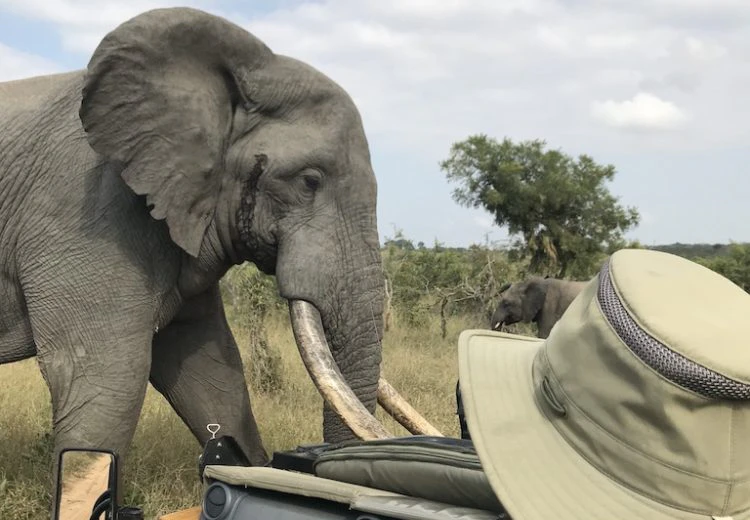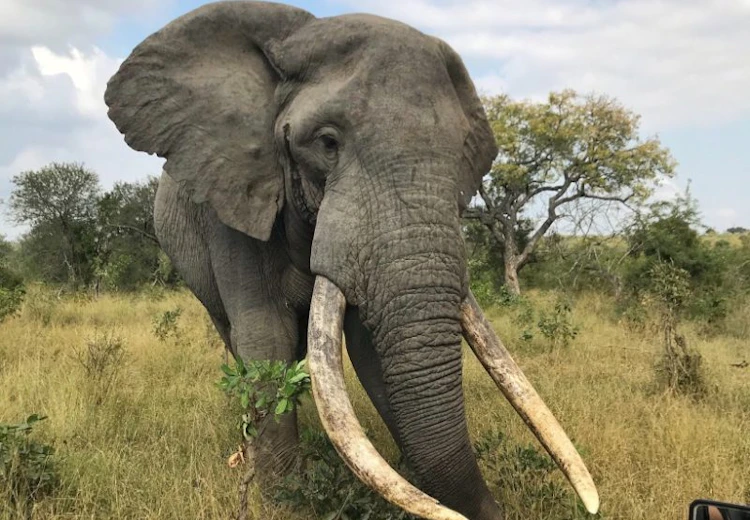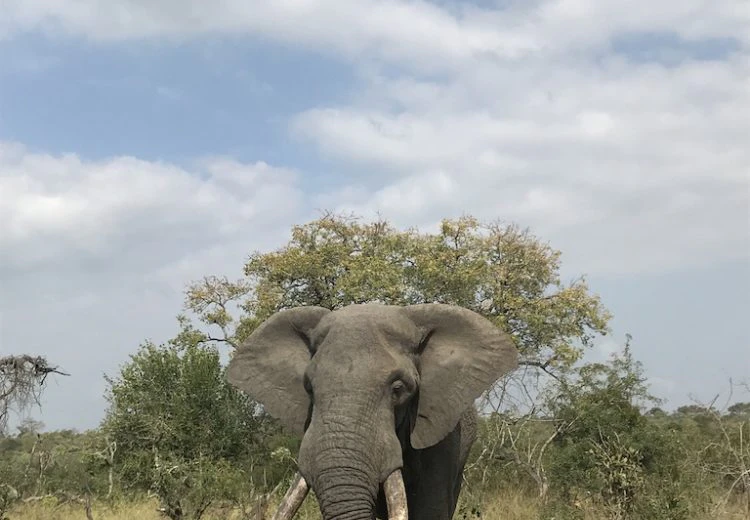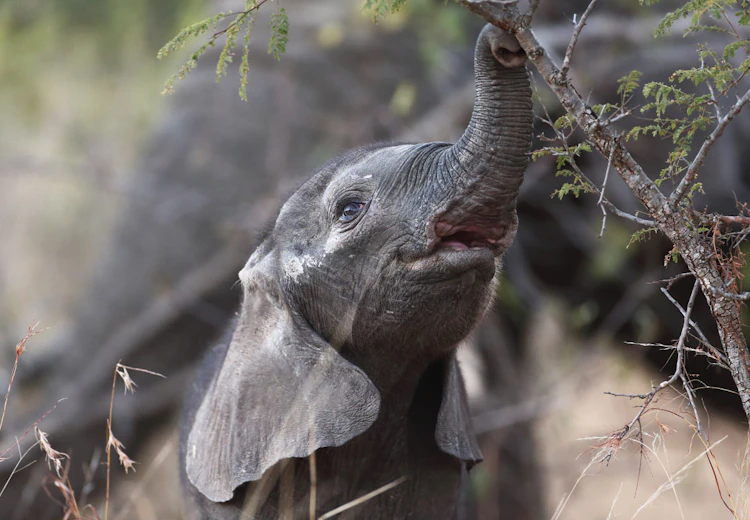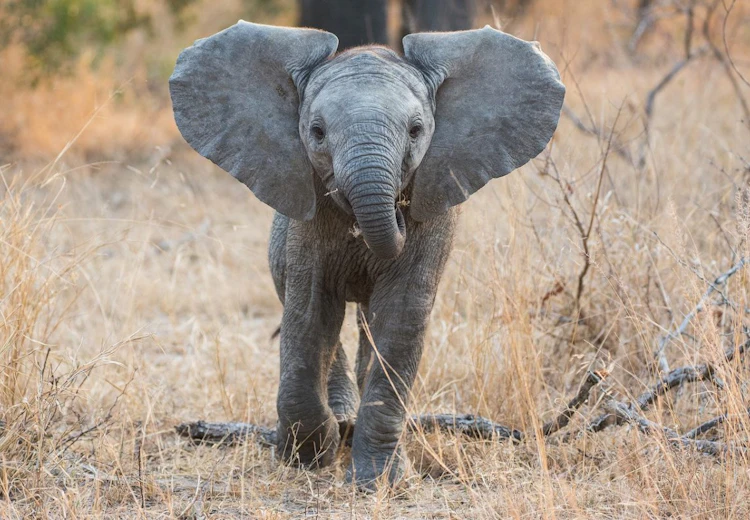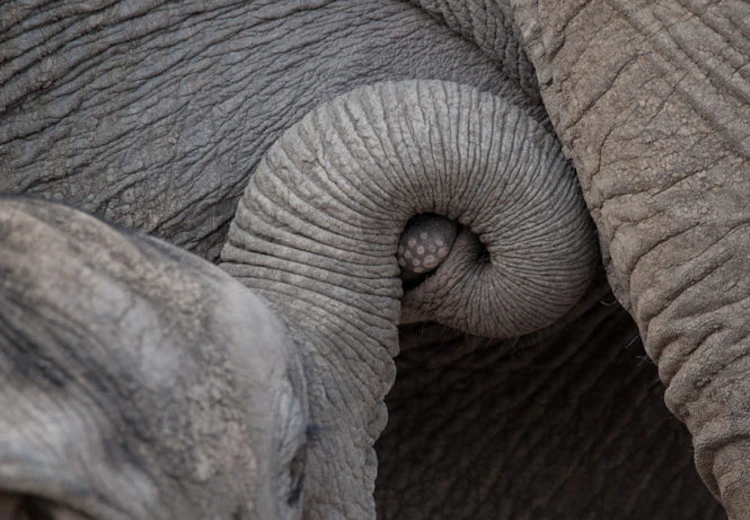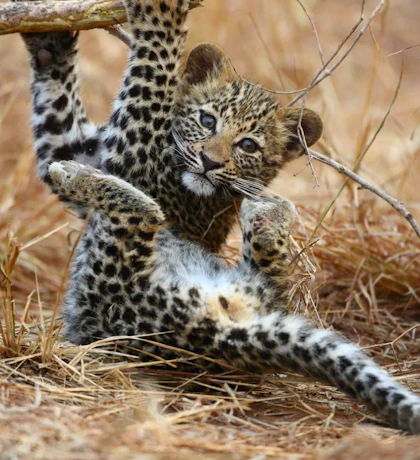Not ready to book just yet? Submit an enquiry and our team will be in touch within 24 hours.
Africa's Big Tuskers: Monzweni & The Magnificent Seven
Royal MalewaneElephants are undoubtedly one of the most fascinating species in the animal kingdom. Aside from being the largest land mammal in the world, they are incredibly intelligent and emotional creatures. Their dexterous trunks have over 150,000 muscles which allow them to perform all sorts of tasks from drinking water and gathering food to sniffing out danger.
Elephant tusks are a thing of great beauty. They are actually enlarged incisor teeth which first appear when elephants are around two years old and they continue growing throughout their lives. They evolved to assist elephants in gathering food, prising bark from trees, lifting objects and digging up roots. Capable of growing more than 3 metres in length, tusks are wielded in battles for dominance and breeding rights alike. They are an elephant’s primary defense mechanism and in particular they help to protect their trunks – as such, size matters. Over the years, a number of elephants displayed tusks that were far larger than average – these elephants became known as the legendary ‘Big Tuskers’.
Elephants have a lifespan of 60-70 years.
Big Tuskers are elephants with tusks each weighing 50 kg (100 pounds) or more due to a rare genetic variation that results in magnificent tusk growth – some becoming so large they would graze the ground as the elephant walked. According to SAN Parks, the longest tusk ever recorded was the size of a small car at 3.5m long and the heaviest tusk weighed almost 120 kg.
Due to the devastating effects of ivory poaching, there are only an estimated 24 Big Tuskers, also known as 100 Pounders, alive today and The Greater Kruger National Park remains one of the few places in the world to see these unique animals.
The Magnificent Seven
During the 1980s seven large bull elephants roamed the Kruger National Park, all with enormous tusks weighing more than 50kgs each and measuring at least 2m in length. They were named after the 1960 Hollywood film “The Magnificent Seven”. Following their deaths, all six sets of skulls and tusks were recovered and displayed in the Elephant Hall in Letaba Rest Camp – with the exception of João whose tusks broke off in 1984 and were never found.
Name (left tusk weight – right tusk weight): Dzombo (56.8kg – 56.8kg) João (70kg – 60kg) Kambaku (63.2kg – 64kg) Shingwedzi (47.2kg – 58.1kg) Mafunyane (55.1kg – 55.1kg) Ndlulamithi (64.6kg – 57.2kg) Shawu (52.6kg – 50.8kg).
Although many of Africa’s elephant populations have seen the rare genes of their largest Big Tuskers depleted by ivory poachers, the legend lives on as elephants in the Kruger National Park are constantly being monitored as contenders for the title “Emerging Tusker”. Like living relics from a bygone era, the new generation of Africa’s Big Tusker elephants brings hope that the rare genes for mythical tusks aren’t entirely lost. Today the legend continues with Monzweni…
Monzweni
Monzweni is one of Africa’s Emerging Tuskers found in The Greater Kruger National Park.
Pictured above is Monzweni – a.k.a Kilimanjaro – a giant bull as noble as the iconic mountain he represents. Juan Pinto, a Professional Field Guide and Master Tracker at Royal Malewane, photographed this incredible sighting in February 2020. Monzweni is classified as one of the ‘Emerging Tuskers’. To be classified as an Emerging Tusker, an elephant’s tusks need to protrude at least 1m from their lip line.
Monzweni was discovered in 2006. He is a gentle giant with a placid nature and despite his size, he has the incredible ability to blend in with the tall trees under whose shade he rests during hot summer days. Those who are lucky enough to encounter this majestic animal are left in awe of his unique size and almost symmetrical tusks.
Tiny Tuskers
It is becoming more common to see elephants with smaller tusks or even with no tusks at all. Scientists believe the increase in ‘tusklessness’ is an evolutionary response to higher levels of ivory poaching.
Tusklessness occurs naturally as the result of a genetic mutation and historically speaking should be rare. However, the increase in poaching in recent years has pushed tusk sizes down and females are often limited to mating with tuskless or smaller-tusked elephants. Ivory poachers are not only decreasing the current number of Big Tusker elephants in Africa, but they are endangering the rare “big tusk” gene altogether.
It has been reported that the average tusk size of an African elephant decreased by 50% over the past 150 years. Some scientists speculate that all African elephants could be tuskless in the not too distant future.
Can I Encounter Big Tuskers Today
Although rare, it is certainly possible. Guests at Royal Malewane have encountered Monzweni and the rest of the Big 5 on game drives and while on exhilarating bush walks or trails. There is no greater thrill than approaching a herd of elephants while on foot with your ranger and tracker. Due to the extensive qualifications of the Royal Malewane guiding team guests are able to enjoy walks and trails knowing that they are in safe and experienced hands – a unique way to experience a Big 5 safari.
To learn more about the unrivalled wildlife experience at Royal Malewane, click here.
To discover more about Royal Malewane watch our videos of the Main Lodge and of The Farmstead.
For reservations or enquiries please contact reservations@trp.travel or +27 (0) 21 671 5502


